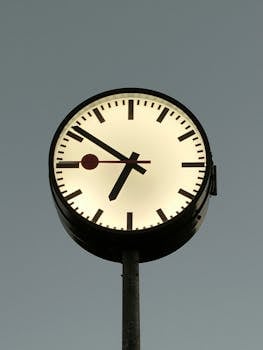What is focus clock?

What is Focus Clock?
In today’s fast-paced world, managing our time effectively is more crucial than ever. Enter the focus clock, a powerful tool that could transform the way you approach your productivity. But what exactly is a focus clock? It’s not just a timer; it’s a method designed to enhance focus, streamline your tasks, and achieve a better work-life balance. In this article, I’ll break down the concept of a focus clock, its benefits, and how you can easily implement it into your daily routine.
Understanding the Focus Clock Concept
A focus clock is a time management tool specifically aimed at helping individuals concentrate on their work by structuring their time. It’s not merely a countdown timer; it embodies a method that encourages focused work periods interspersed with breaks.
Definition of Focus Clock
In simple terms, a focus clock is a device or application that tracks periods of focused work followed by short breaks. By dividing work into manageable intervals, it helps users maintain concentration and prevent burnout. The most popular technique associated with focus clocks is the Pomodoro Technique, where you typically work for 25 minutes before taking a 5-minute break. You can explore more about the Pomodoro Technique on Todoist.
How It Differs from Traditional Time Management Tools
Unlike traditional time management methods that may rely on long, uninterrupted work sessions, a focus clock promotes short bursts of productivity. This approach is particularly effective for combating distractions and maintaining high energy levels. Traditional tools often don’t account for mental fatigue, which the focus clock method directly addresses by integrating breaks.
Benefits of Using a Focus Clock
Integrating a focus clock into your daily routine isn’t just about managing time; it’s about enhancing overall productivity. Here are some key benefits:
Enhanced Focus and Concentration
Using a focus clock can dramatically improve your attention span during tasks. By committing to concentrated work sessions, you train your brain to focus better. This method also reduces the temptation to multitask, which can dilute your efforts and lower overall productivity. Studies show that focused work can lead to better performance and quicker completion of tasks. For more insights, you can read about the power of focus time.
Better Work-Life Balance
A focus clock encourages regular breaks, allowing you to recharge. This balance is essential for preventing burnout and maintaining a healthy relationship with your work. When you take time to step away and refresh your mind, you return to your tasks with renewed energy, ultimately improving the quality of your work and life.
How to Implement a Focus Clock in Your Routine
Making a focus clock a part of your daily schedule is straightforward. Here are practical steps to help you get started.
Setting Up Your Focus Clock
You can choose from a variety of tools to create your focus clock. There are apps available like Pomofocus and Focus Keeper designed to help you track your work and break periods efficiently. You can also use a simple kitchen timer or your smartphone. The key is to select a method that feels comfortable and effective for you.
Establishing a Routine
Integrating focus clock sessions into your everyday tasks is essential for maximizing its effectiveness. Start by identifying your most productive hours and plan your focus sessions accordingly. For instance, you might dedicate the first hour of your workday to focused tasks followed by a break. Gradually, you can adjust the intervals to find the rhythm that works best for you.
Common Mistakes and How to Avoid Them
While using a focus clock can significantly enhance your productivity, there are common pitfalls to be aware of.
Overloading Work Sessions
One mistake people often make is extending work sessions too long. While it might feel productive to push through, this can lead to mental fatigue and decreased focus. Stick to the recommended work intervals, typically 25 minutes, and remember that breaks are just as important as the work itself.
Neglecting Breaks
Another common error is skipping breaks altogether. Breaks are essential for maintaining focus and productivity. Make sure to schedule them and treat them as an integral part of your work process. During breaks, step away from your workspace, stretch, or grab a drink. This will help clear your mind and prepare you for the next focus session.
Conclusion
A focus clock is a practical and effective tool that can help you optimize your productivity and manage your time better. By fostering enhanced focus, promoting a healthier work-life balance, and encouraging proper routines, this technique can transform your approach to work. If you haven’t tried using a focus clock yet, now is the perfect time to start. Embrace this method and watch how it can elevate your productivity to new heights!